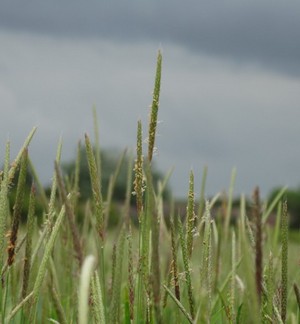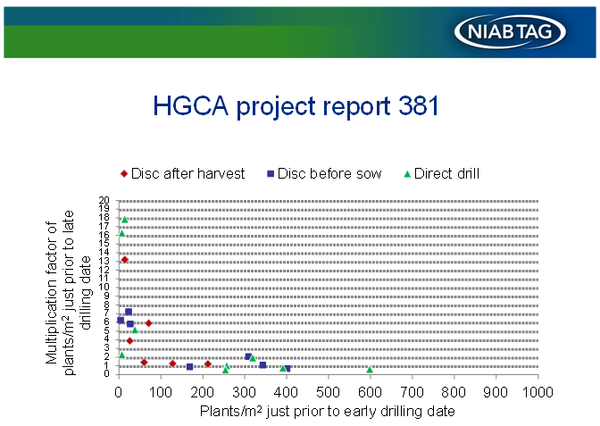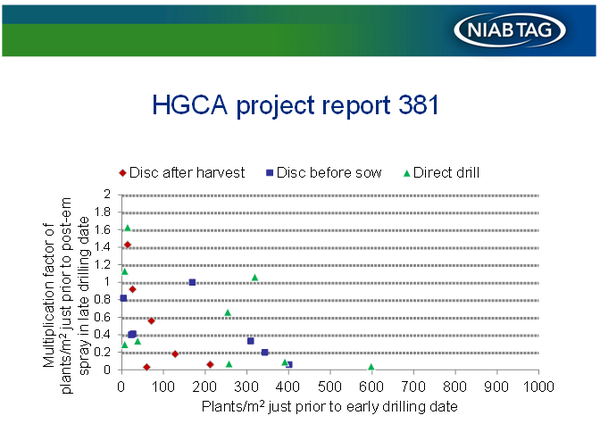- About
-
Research
- Agronomy and farming systems
-
Agricultural crop research
-
Research projects - agriculture
- About SASSA-SAI
- BioBoost
- Biomass Connect
- CTP for Sustainable Agricultural Innovation
- Climate Ready Beans - workshop presentations (March 2022)
- Crop diversity HPC cluster
- Designing Future Wheat
- Final project workshop
- Get involved
- List of materials
- News and updates
- Partners
- Rustwatch
- The Sentinel Crop Disease Surveillance Network
- The research team
- UK Cereal Pathogen Virulence Survey
- UK wheat varieties pedigree
- Weed management - IWM Praise
- Crop breeding
- Crop characterisation
- Data sciences
- Genetics and pre-breeding
- Plant biotechnology
- Plant pathology and entomology
- Resources
-
Research projects - agriculture
-
Horticultural crop research
-
Research projects - horticulture
- Augmented Berry Vision
- BEESPOKE
- Boosting brassica nutrition in smart growing systems
- CTP for Fruit Crop Research
- Develop user-friendly nutrient demand models
- Egg laying deterrents for spotted wing drosophila
- Enhancing the nutritional quality of tomatoes
- Improving berry harvest forecasts and productivity
- Improving vineyard soil health through groundcover management
- Intelligent growing systems
- Knowledge transfer for sustainable water use
- POME: Precision Orchard Management for Environment
- RASCAL
- STOP-SPOT
- UV-Robot
- Crop science and production systems
- Genetics, genomics and breeding
- Pest and pathogen ecology
- Field vegetables and salad crops
- Plum Demonstration Centre
- The WET Centre
- Viticulture and Oenology
-
Research projects - horticulture
- Crop Science Centre
- Research Projects
-
Services
- Analytical Services
- Business Development
- Commercial trial services
- Membership
- Plant breeding
- Plant characterisation
- Seed certification
-
Training
-
Technical agronomy training
- Advanced crop management of bulb onions
- Advanced crop management of vegetable brassicas
- Advanced nutrient management for combinable crops
- Benefits of cover crops in arable systems
- Best practice agronomy for cereals and oilseed rape
- Developing a Successful Strategy for Spring Crops
- Disease Management and Control in Cereal Crops
- Incorporating SFI options into your rotation
- Protected Environment Horticulture – Best Practice
- Techniques for better pest management in combinable crops
- Crop inspector and seed certification
- Licensed seed sampling
-
Technical agronomy training
- News & Views
- Events
-
Knowledge Hub
- Alternative and break crops
-
Crop genetics
- POSTER: Diversity enriched wheat (2025)
- POSTER: Genetics of wheat flag leaf size (2024)
- POSTER: Wheat yield stability (2024)
- Poster: Traits for future cereal crops (2022)
- POSTER: wild wheat fragment lines (2022)
- POSTER: Improving phenotyping in crop research (2022)
- PRESENTATION: Plant breeding for regen ag
- Poster: Designing Future Wheat (2020)
- Crop nutrition
-
Crop protection
- POSTER: Understanding the hierarchy of black-grass control (2025)
- POSTER: Emerging weed threats (2025)
- POSTER: Disease control in barley (2025)
- Poster: Weed seed predation in regen-ag (2024)
- POSTER: Disease control in winter wheat (2025)
- POSTER: Mode of action (2023)
- POSTER: Inter-row cultivation for black-grass control (2022)
- POSTER: UKCPVS winter wheat yellow rust in spring 2025 (2025)
- Poster: Management of Italian ryegrass (2021)
- POSTER: UKCPVS winter wheat rusts - 2024/25 review (2025)
- POSTER: UKCPVS disease monitoring and the benefit to UK growers (2025)
- POSTER: Diagnosing and scoring crop disease using AI (2025)
- POSTER: Finding new sources of Septoria resistance (2024)
- POSTER: Fungicide resistance research (2024)
- POSTER: Detecting air-borne pathogens (2024)
- POSTER: Oilseed rape diseases (2024)
- POSTER: Fungicide resistance research (2024)
- POSTER: Improving chocolate spot resistance (2022)
- Poster: Pathogen diagnostics (2022)
- Fruit
- Regen-ag & sustainability
-
Seed certification
- POSTER: Wheat DUS (2024)
- POSTER: Innovation in variety testing (2024)
- POSTER: AI and molecular markers for soft fruit (2024)
- POSTER: Barley crop identification (2023)
- POSTER: Herbage grass crop identification (2023)
- POSTER: Herbage legume crop identification (2024)
- POSTER: Minor cereal crop inspecting (2023)
- POSTER: Pulse crop identification (2023)
- POSTER: Wheat crop identification (2023)
-
Soils and farming systems
- POSTER: Checking soil health - across space and time (2024)
- POSTER: Checking soil health - step by step (2024)
- POSTERS: Changing soil management practices (2022)
- Poster: Monitoring natural enemies & pollinators (2021)
- POSTER: Soil structure and organic matter (2024)
- POSTER: Novel wheat genotypes for regen-ag (2024)
- Video: New Farming Systems project (2021)
- Video: Saxmundham Experimental Site (2021)
- POSTER: Impact of prolonged rainfall on soil structure (2024)
- POSTER: Soil & agronomic monitoring study (2024)
- POSTER: The impact of rotations & cultivations (2024)
- VIDEO: Great Soils; soil sampling guidelines (2020)
- Poster: Soil invertebrates within arable rotations (2024)
- VIDEO: Soil health assessment (2021)
- POSTER: Saxmundham - modern P management learnings
- POSTER: Saxmundham - 125 years of phosphorus management
- Poster: Soil phosphorus - availability, uptake and management (2025)
- POSTER: Morley long term experiments (2025)
- POSTER: Exploiting novel wheat genotypes for regen-ag (2025)
- Video: Saxmundham Experimental Site (2021)
- Varieties
Black-grass allelopathy nonsense?
 There is an aspect of black-grass cultural control practice with which I would like to take issue. There is the notion that multiple applications of glyphosate are needed in the autumn to maximise the emergence of black-grass plants and hence maximise seed loss prior to sowing the following winter crop. This is based on the unsubstantiated theory that allelopathy is the cause of the observation that there is an apparent higher total emergence of black-grass when two or more applications of glyphosate are made to a false seedbed in order to kill newly emerged black-grass, rather than when a single application is made just before sowing the subsequent autumn sown crop. In my opinion there is a much more likely explanation for this than allelopathy being the cause.
There is an aspect of black-grass cultural control practice with which I would like to take issue. There is the notion that multiple applications of glyphosate are needed in the autumn to maximise the emergence of black-grass plants and hence maximise seed loss prior to sowing the following winter crop. This is based on the unsubstantiated theory that allelopathy is the cause of the observation that there is an apparent higher total emergence of black-grass when two or more applications of glyphosate are made to a false seedbed in order to kill newly emerged black-grass, rather than when a single application is made just before sowing the subsequent autumn sown crop. In my opinion there is a much more likely explanation for this than allelopathy being the cause.
The Oxford Dictionary defines allelopathy as “the chemical inhibition of one plant (or other organism) by another, due to the release into the environment of substances acting as germination or growth inhibitors”. In this case it is suggested that exudates from the roots of newly emerged black-grass prevent the germination of neighbouring viable black-grass seeds in the soil. Hence, it is argued that allelopathy has to be avoided to ensure maximum germination of black-grass seed, thereby maximising seed losses before sowing the following winter crop. However, it should be noted that no root exudates that damage the germination or growth of black-grass or other species have ever been identified in black-grass but more proof is needed to discount the claim of allelopathy.
There are data in HGCA Project Report 381 (http://archive.hgca.com/publications/documents/cropresearch/PR381_Final_Project_Report.pdf) on the impact of cultivations and dormancy on black-grass populations that indirectly suggest allelopathy is not the explanation as to why there is an apparent higher total emergence of black-grass when several applications of glyphosate, rather than a single application, are made to a false seedbed. There is no part of the report that covers this specific aspect and some work has to be done to extract the relevant data. Luckily for you, I have attempted to do this work! In this project there were two dates of drilling of winter wheat but for both drilling dates, no application of glyphosate was made after harvest until a single application just prior to sowing. Therefore, the difference in the number of black-grass counted at the time of glyphosate application indicates the increase in the size of black-grass population between the two drilling dates.
The first diagram shows on the horizontal axis the number of black-grass seedlings just before the single glyphosate application made prior to the first drilling date of winter wheat. You will note that there were three cultivation systems; cultivate immediately after harvest of the preceding winter wheat (in the project a Simba Solo was used), cultivate immediately before drilling (the glyphosate was applied immediately before the cultivation) and direct drilling. The vertical axis shows how much additional black-grass emerged prior to the delayed drilling, expressed as a proportion of the initial count. So a two on the vertical scale shows that there were double the number of plants emerged before a single application of glyphosate being made prior to the late drilling than the number emerged before a single application of glyphosate prior to the early drilling.
This first diagram agrees with the field observations that early emerged black-grass may impact on the establishment of later emerging black-grass. The higher the number (particularly over 50-100 plants/m2) of black-grass plants prior to the first drilling, the less the proportional increase in numbers prior to the second drilling. In most situations, at the higher infestations, the multiplication was one or below indicating that there was no increase in the number of plants between the two drilling dates. Those who promote the notion of allelopathy would say that this proves their point, with allelopathy being absent or low at the low populations and high at the high populations. Accepting this notion means accepting that there is an increase in the proportion of ungerminated seed as allelopathy increases, leading to an expectation of proportionally higher numbers emerging after the later sowing date where the background populations are high.

To test this expectation, I have prepared the second diagram. This has the same horizontal axis but the vertical axis is now the increase in the proportion of emerged black-grass plants in the late sown crop prior to Atlantis being applied at the 2-3 leaf stage (it worked when the project started) or in the untreated areas. This shows that the proportional increase appears to show the same pattern but the rate of reduction is less, most probably because the count was taken when the most advanced black-grass were only 2-3 leaves. There is no apparent association with supposed low levels of allelopathy at the low populations in diagram 1 resulting in lower levels of black-grass post-crop emergence, or supposed high levels of allelopathy at the highest populations maintaining more viable seed which would germinate in the following crop (diagram 2).

Hence, allelopathy appears not to be the explanation for the relationships between the background black-grass population of the site and the proportional increases in plant counts, either before late drilling or early post-emergence of the crop. The ‘shape’ of the diagrams strongly suggests that the far more logical explanation is intra-specific competition in black-grass (i.e. simply black-grass competing with other black-grass). This can take two forms. One is where the shading by the earlier emerged black-grass prevents light getting to the soil surface thus inhibiting germination. This would have a similar effect to allelopathy and so this very limited data suggests that the cause is much more likely simply to be that later emerging black-grass is out-competed by the earlier emerging black-grass. Accepting that this is the explanation means that the seed loss through germination in the soil is the same regardless of the numbers of glyphosate applications made.
This latter and more logical explanation suggests that there is no need (in terms of black-grass seed loss) for multiple applications of glyphosate and using only one application just prior to sowing will have the same impact on the numbers emerging in the crop. However, on a practical note, letting black-grass get very advanced means that drilling after the glyphosate application could be delayed.
Reducing the number of applications of glyphosate will save money and operational stress and reduce the risk of glyphosate resistance in black-grass. It is interesting to note that the first weed to develop glyphosate resistance in the world was rye-grass (Lolium rigidum) in Australia and in the first recorded cases, the resistance mutations made it weak and uncompetitive. Should this be the case with black-grass, then using intra-specific competition to kill the weaker plants in the stubbles may be an additional anti-resistance strategy.
I am the first to admit that these data do not totally disprove allelopathy in the field and I suggest that specific research is required. However, it seems to me that those who have counted a higher total black-grass emergence after multiple sprays of glyphosate rather than after a single spray just before drilling, have overlooked the simple and more logical explanation of plant competition reducing numbers once the black-grass grows beyond the early emergence stage.





